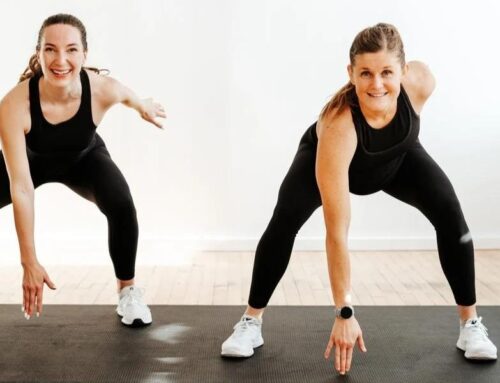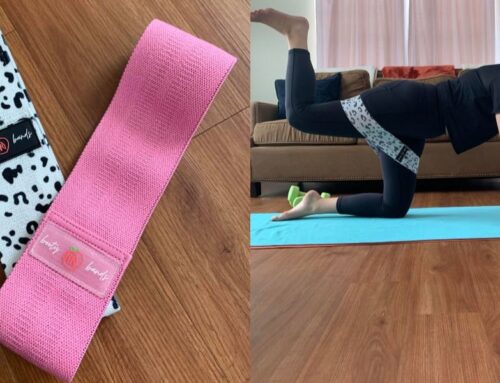
The splits, or the act of extending the legs in opposite directions to create a 180-degree angle, is an impressive and challenging skill that requires flexibility, strength, and practice.
While commonly associated with dancers and gymnasts, anyone can learn how to do the splits with dedication and proper technique. In addition to its aesthetic appeal, mastering the splits can provide numerous physical benefits, such as improved flexibility, balance, and lower body strength. However, it’s important to approach the splits with caution and proper guidance to prevent injury.
In this article, we will explore the benefits of doing the splits, provide step-by-step instructions on how to achieve them, and discuss important precautions to keep in mind.
Benefits of Doing Splits
The splits are a challenging and impressive skill that requires flexibility, strength, and practice. While it may seem like a purely aesthetic feat, there are numerous physical benefits associated with doing the splits. Here are some of the main benefits:
- Improved flexibility: Doing the splits requires a great deal of flexibility in the legs, hips, and lower back. Consistent practice can help increase your range of motion and overall flexibility, which can be beneficial in many aspects of daily life.
- Increased lower body strength: The splits require strength in the legs, hips, and core muscles. Regular practice can help build strength and endurance in these areas, which can improve your overall athletic performance and prevent injuries.
- Better balance and stability: The splits require a great deal of balance and stability. Consistent practice can help improve your proprioception (sense of body position in space) and overall balance, which can be beneficial in many aspects of daily life.
- Reduced risk of injury: By increasing your flexibility and strength, you can reduce your risk of injuries such as strains, sprains, and pulled muscles. Additionally, improved balance and stability can also help prevent falls and other accidents.
- Improved posture: Doing the splits requires a great deal of core strength and proper alignment. Consistent practice can help improve your posture and alignment, which can reduce strain on the back and neck muscles and improve overall comfort.
Overall, the benefits of doing the splits go beyond just the impressive visual display. With consistent practice and proper technique, the splits can provide numerous physical benefits that can improve your overall health and well-being.
How to Do the Splits
Learning how to do the splits can be a challenging but rewarding process. Here are some step-by-step instructions to help you achieve this impressive feat:
- Warm up: Before attempting the splits, it’s important to warm up your muscles to prevent injury. Spend at least 5-10 minutes stretching your legs, hips, and lower back.
- Find your stance: Stand with your feet shoulder-width apart and your toes pointing forward. Shift your weight to your right leg and step your left foot forward into a lunge.
- Slowly lower into the splits: From your lunge position, begin to slide your left foot forward, keeping your toes pointed and your hips squared. As you slide forward, lower your hips towards the ground and straighten your right leg behind you. Keep your hands on the ground for balance, or place them on blocks or a chair for support.
- Hold the stretch: Once you have reached your maximum stretch, hold the position for 30-60 seconds. Breathe deeply and try to relax your muscles as much as possible.
- Switch sides: Slowly come out of the splits and switch sides, stepping your right foot forward into a lunge and repeating the same steps.
- Practice regularly: Consistent practice is key to improving your flexibility and mastering the splits. Aim to practice at least 3-4 times per week, gradually increasing the duration and intensity of your stretches.
Doing the Splits: Instructions and Precautions
While learning how to do the splits can provide numerous physical benefits such as improved flexibility and lower body strength, it’s important to approach this skill with caution and proper guidance. Here are some precautions to keep in mind:
- Don’t force it: Never push your body beyond its limits or try to force yourself into the splits. This can cause injury and delay your progress.
- Listen to your body: Pay attention to any discomfort or pain and adjust your stretches accordingly. If you feel any sharp or sudden pain, stop immediately and seek medical attention.
- Seek guidance: If you’re new to stretching or have any existing injuries or medical conditions, it’s best to seek guidance from a trained professional such as a physical therapist or yoga instructor.
By following these instructions and precautions, you can safely and effectively learn how to do the splits and achieve your flexibility goals.

What to Expect When You Train for Splits
When training for the splits, it’s important to have realistic expectations and understand that progress may take time. Here are some things to expect when you begin training for the splits:
- Progress takes time: Achieving the splits requires significant flexibility, strength, and endurance in the lower body muscles. It’s important to approach your training with patience and consistency, as progress may take weeks or even months.
- Muscle soreness: As you work on stretching and strengthening your muscles, you may experience some muscle soreness or discomfort. This is normal and can be alleviated with proper stretching and rest.
- Plateaus: At times, you may feel like you’ve hit a plateau in your progress. This is also normal and can be overcome by switching up your stretching routine or adding in new exercises to challenge your muscles.
- Increased flexibility: Over time, you should notice a significant improvement in your flexibility and range of motion. This increased flexibility can also translate to improved athletic performance and reduced risk of injury in other physical activities.
- Increased strength: In addition to flexibility, the process of training for the splits also involves building strength in the lower body muscles. You may notice an improvement in your overall leg strength and balance as a result of your training.
- Injury prevention: Proper training for the splits involves stretching and strengthening the muscles in a gradual and controlled manner. This can help prevent injury and improve overall joint health.
By understanding these expectations and approaching your training with consistency, patience, and proper technique, you can achieve the splits and enjoy the numerous physical benefits that come with it.
The bottom line
The splits are an excellent way to improve your flexibility and they look impressive too. If you want to do the splits, all you have to do is follow the instructions above.
Be sure to start out slow and increase your stretch time gradually until you can hold each stretch for at least 10 seconds.
It will take a lot of time and practice to get the splits, but don’t give up. The more you train, the closer you’ll get to achieving your goal. If you don’t want to do the splits, you can just use the exercises mentioned in this article for other purposes, such as flexibility training.
Before starting your exercises, you should do some light activities like jogging or jumping rope to warm up your body and get the blood flowing to your muscles. Perform these exercises at least once a day for 5-10 minutes per session and you’ll soon be on your way to achieving your goals!



